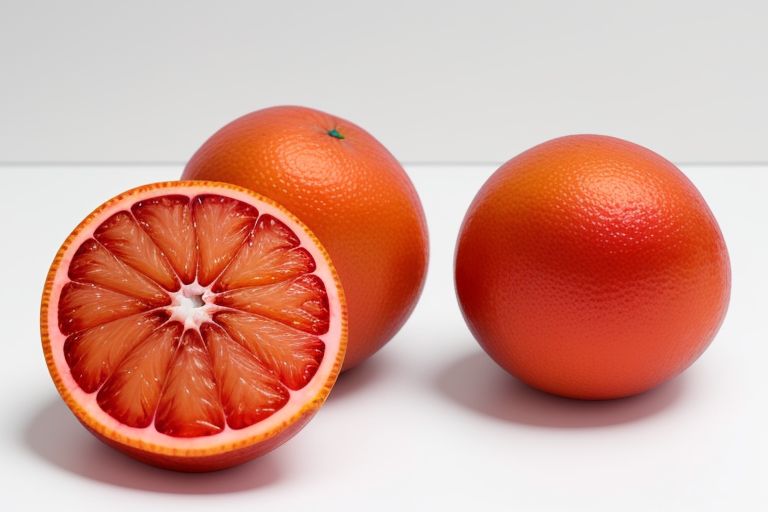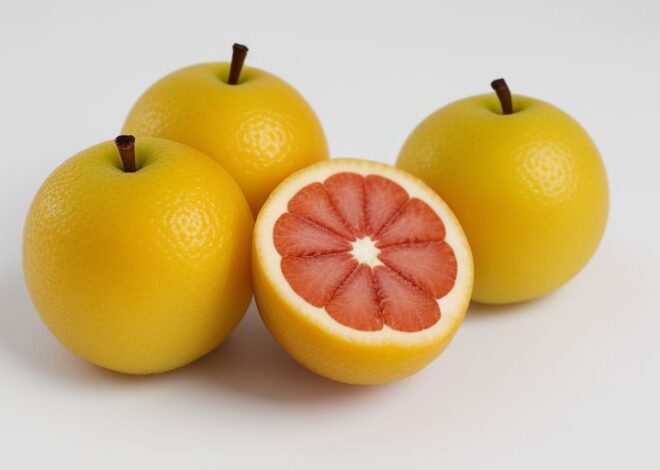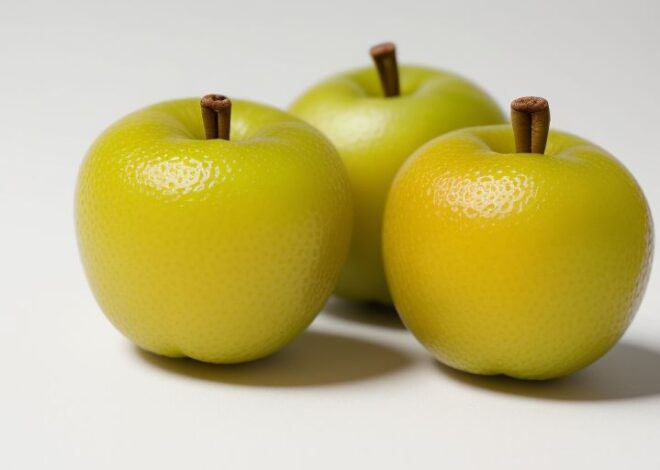
Blood orange
Introduction
The blood orange is a variety of orange (Citrus sinensis) that is characterized by its deep red to reddish-purple flesh and juice. This distinctive feature is due to the presence of anthocyanins, a type of pigment that is more commonly found in flowers and grapes. The blood orange is a popular fruit among citrus enthusiasts and chefs, who prize it for its unique flavor and color.
Etymology
The name “blood orange” is thought to have originated from the fruit’s deep red color, which resembles blood. The term “blood” is also used to describe other fruits with deep red or purple colors, such as blood grapes and blood plums.
Description
Blood oranges are medium to large in size, with a spherical or slightly oval shape. The peel is smooth and glossy, with a deep orange color that may have a reddish tint. The flesh is segmented and juicy, with a sweet-tart flavor that is more intense than regular oranges. The juice is also deep red in color, making it a popular choice for cocktails and cooking.
Taxonomy and Cultivars
Blood oranges are a type of sweet orange (Citrus sinensis), which is a hybrid of the pomelo (Citrus maxima) and the tangerine (Citrus reticulata). There are several cultivars of blood oranges, including:
- Tarocco: This is the most widely cultivated blood orange variety, known for its bright red flesh and juice.
- Moro: This variety has a deeper red color than Tarocco, and is often used for juicing and cooking.
- Sanguinello: This variety has a lighter red color than Tarocco, and is often eaten fresh.
Distribution and Habitat
Blood oranges are grown in many parts of the world, including the Mediterranean region, the United States, and South Africa. They prefer a warm and subtropical climate, with well-drained soil and full sun.
Cultivation
Blood oranges are typically propagated through grafting, and are grown on a trellis or in a container. They require regular watering and fertilization, and are pruned annually to maintain their shape and promote fruiting.
Production and Uses
Blood oranges are used in a variety of ways, including:
- Juicing: Blood orange juice is a popular ingredient in cocktails and cooking.
- Cooking: Blood oranges are used in marmalades, sauces, and braising liquids.
- Fresh eating: Blood oranges are often eaten fresh, either on their own or in salads.
Phytochemistry
Blood oranges contain a range of phytochemicals, including:
- Anthocyanins: These are the pigments responsible for the fruit’s deep red color.
- Vitamin C: Blood oranges are a rich source of vitamin C, an antioxidant that is important for immune function and overall health.
- Flavonoids: These are a type of phytochemical that have been shown to have anti-inflammatory and antioxidant properties.
Flavor
The flavor of blood oranges is often described as sweet-tart, with a hint of raspberry or strawberry. The flavor is more intense than regular oranges, and is often used to add depth and complexity to dishes.
Toxicity
Blood oranges are generally considered safe to eat, but may cause allergic reactions in some individuals. The peel and seeds contain a compound called limonene, which can be toxic in large quantities.
Nutrition
Blood oranges are a nutrient-rich food, providing:
- Vitamin C: 100% of the daily recommended intake per 100g serving
- Potassium: 10% of the daily recommended intake per 100g serving
- Fiber: 2% of the daily recommended intake per 100g serving
Culture
Blood oranges have a rich cultural heritage, and are often associated with:
- Italian cuisine: Blood oranges are a key ingredient in many Italian dishes, including salads, sauces, and braising liquids.
- Spanish cuisine: Blood oranges are used in many Spanish dishes, including marmalades and desserts.
- Greek cuisine: Blood oranges are used in many Greek dishes, including salads and braising liquids.
Tables
| Nutrient | Amount (per 100g serving) |
|---|---|
| Vitamin C | 100% of the daily recommended intake |
| Potassium | 10% of the daily recommended intake |
| Fiber | 2% of the daily recommended intake |
Quotes
- “The blood orange is a fruit of passion, with a flavor that is both sweet and tart.” – Chef Mario Batali
- “The deep red color of the blood orange is like a ray of sunshine in the winter months.” – Food writer, Mark Bittman
Continuing from where we left off…
History
Blood oranges have a long history that dates back to ancient times. They were first cultivated in China over 4,000 years ago, and were later introduced to the Mediterranean region by the Arabs in the 9th century. The fruit was highly prized for its unique color and flavor, and was often used in cooking and medicine.
Symbolism
Blood oranges have a rich symbolic meaning in many cultures. In China, they are considered a symbol of good luck and prosperity, while in Italy, they are a symbol of love and passion. In some cultures, the fruit is also associated with fertility and abundance.
Fun Facts
- Blood oranges are also known as “ruby red” oranges, due to their deep red color.
- The fruit is a popular ingredient in many cocktails, including the classic “Blood Orange Martini”.
- Blood oranges are a good source of antioxidants, which can help protect against cell damage and reduce inflammation.
Recipes
Here are a few recipes that showcase the unique flavor and color of blood oranges:
- Blood Orange Salad: A simple salad made with mixed greens, blood orange segments, and a tangy vinaigrette.
- Blood Orange Sorbet: A refreshing dessert made with blood orange juice, sugar, and water.
- Blood Orange Braised Short Ribs: A hearty dish made with short ribs, blood orange juice, and a rich demiglace.
Conclusion
The blood orange is a unique and flavorful fruit that is rich in history, symbolism, and cultural significance. Its deep red color and sweet-tart flavor make it a popular ingredient in many recipes, from salads and cocktails to desserts and braising liquids. Whether you’re a foodie, a chef, or just a lover of all things citrus, the blood orange is definitely worth trying!


